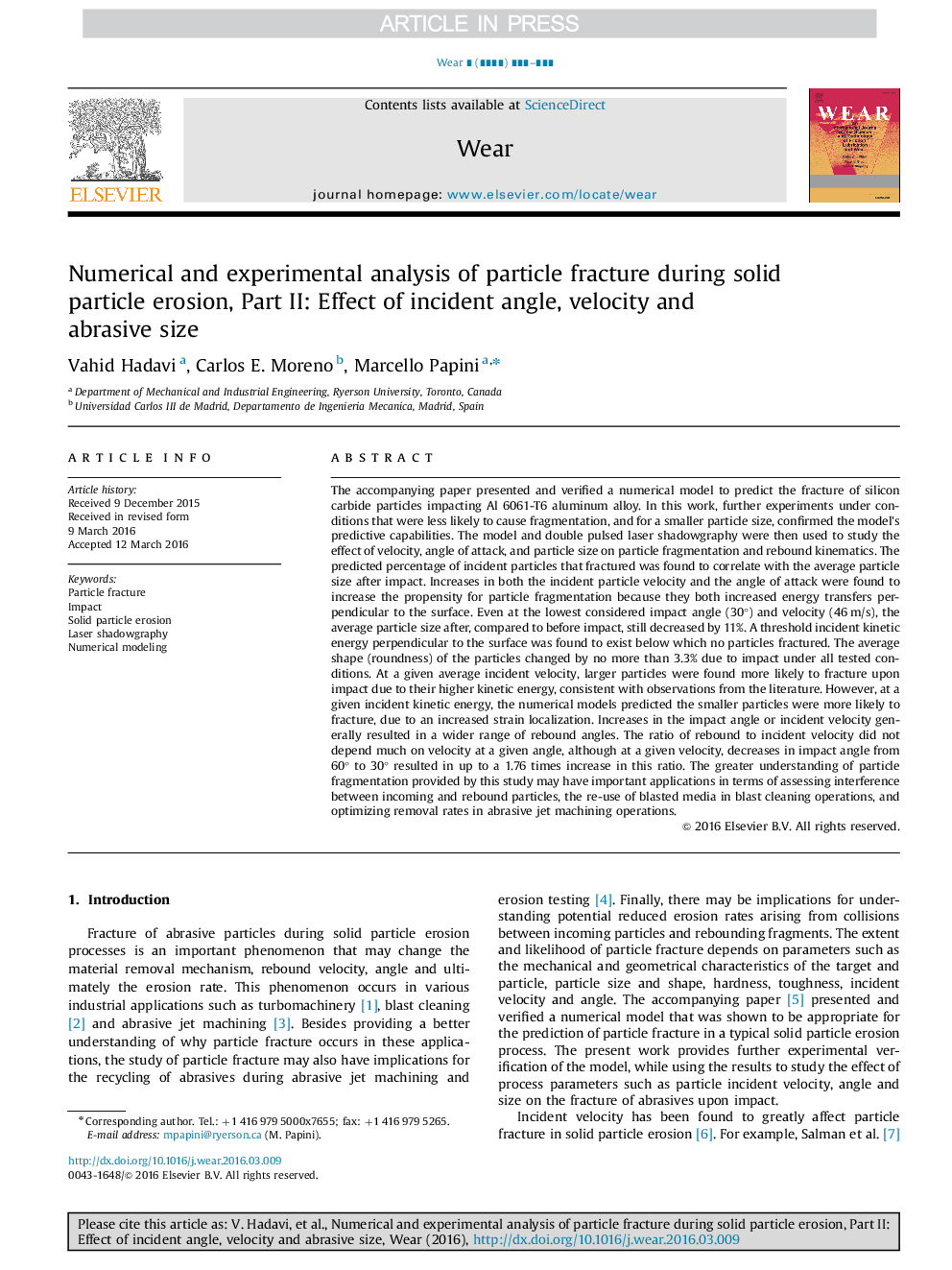| کد مقاله | کد نشریه | سال انتشار | مقاله انگلیسی | نسخه تمام متن |
|---|---|---|---|---|
| 7004132 | 1454963 | 2016 | 12 صفحه PDF | دانلود رایگان |
عنوان انگلیسی مقاله ISI
Numerical and experimental analysis of particle fracture during solid particle erosion, Part II: Effect of incident angle, velocity and abrasive size
ترجمه فارسی عنوان
تجزیه و تحلیل عددی و تجربی شکستگی ذرات در طول فرسایش ذرات جامد، قسمت دوم: تاثیر زاویه حاد، سرعت و اندازه ساینده
دانلود مقاله + سفارش ترجمه
دانلود مقاله ISI انگلیسی
رایگان برای ایرانیان
کلمات کلیدی
شکستگی ذرات، ضربه، فرسایش ذرات جامد، سایه گرافیکی لیزری، مدل سازی عددی،
موضوعات مرتبط
مهندسی و علوم پایه
مهندسی شیمی
شیمی کلوئیدی و سطحی
چکیده انگلیسی
The accompanying paper presented and verified a numerical model to predict the fracture of silicon carbide particles impacting Al 6061-T6 aluminum alloy. In this work, further experiments under conditions that were less likely to cause fragmentation, and for a smaller particle size, confirmed the model׳s predictive capabilities. The model and double pulsed laser shadowgraphy were then used to study the effect of velocity, angle of attack, and particle size on particle fragmentation and rebound kinematics. The predicted percentage of incident particles that fractured was found to correlate with the average particle size after impact. Increases in both the incident particle velocity and the angle of attack were found to increase the propensity for particle fragmentation because they both increased energy transfers perpendicular to the surface. Even at the lowest considered impact angle (30°) and velocity (46 m/s), the average particle size after, compared to before impact, still decreased by 11%. A threshold incident kinetic energy perpendicular to the surface was found to exist below which no particles fractured. The average shape (roundness) of the particles changed by no more than 3.3% due to impact under all tested conditions. At a given average incident velocity, larger particles were found more likely to fracture upon impact due to their higher kinetic energy, consistent with observations from the literature. However, at a given incident kinetic energy, the numerical models predicted the smaller particles were more likely to fracture, due to an increased strain localization. Increases in the impact angle or incident velocity generally resulted in a wider range of rebound angles. The ratio of rebound to incident velocity did not depend much on velocity at a given angle, although at a given velocity, decreases in impact angle from 60° to 30° resulted in up to a 1.76 times increase in this ratio. The greater understanding of particle fragmentation provided by this study may have important applications in terms of assessing interference between incoming and rebound particles, the re-use of blasted media in blast cleaning operations, and optimizing removal rates in abrasive jet machining operations.
ناشر
Database: Elsevier - ScienceDirect (ساینس دایرکت)
Journal: Wear - Volumes 356â357, 15 June 2016, Pages 146-157
Journal: Wear - Volumes 356â357, 15 June 2016, Pages 146-157
نویسندگان
Vahid Hadavi, Carlos E. Moreno, Marcello Papini,
